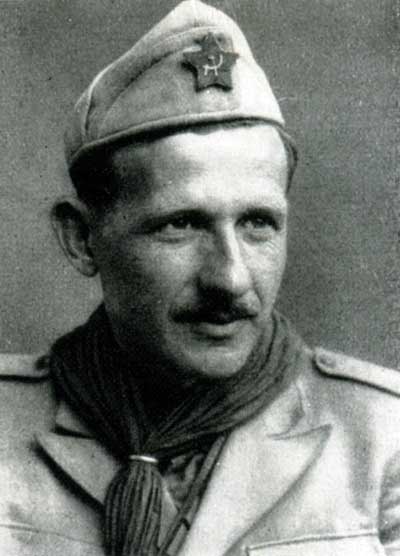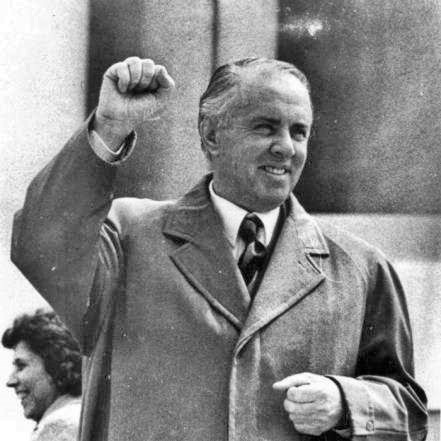“The Designated Successor was found dead in his bedroom at dawn on December 14 [1981]. Albanian television made a brief announcement of the facts at noon: ‘During the night of December 13, the Successor succumbed to a nervous depression and took his own life with a firearm’.” The well-known Albanian writer Ismail Kadare dedicated a book to the unsolved circumstances of Mehmet Shehu’s death, providing insight into the mechanics of Albanian society under Enver Hoxha.¹ Up to the present day, no historian has written a biography of the long-time designated successor of Hoxha, who became, thereafter, public enemy number one. Information about his person remains rare.
Mehmet Ismail Shehu, the son of an Imam, was born in 1913 in Çorrush, in Southern Albania. Until today, he is known as one of the most prominent Albanian Communist Partisans during the Second World War and as a leading figure of the Albanian resistance before Enver Hoxha seized power. Shehu graduated in 1932 from the Tirana “Albanian vocational academy” and joined the Reale Academia Militare Nunziatella of Naples in Italy where he held a scholarship. After being expelled from the academy in 1936 for his pro-Communist sympathies, he changed to the Tirana Officers School.

The following year, he left Albania to become a Republican volunteer in the Spanish Civil War as a member of the Communist Party. He commanded the Fourth Battalion of the XIIth Garibaldi Brigade. On his way back to Albania after the defeat of the Republican forces, he was arrested and interned in France in early 1939. Later, Shehu was transferred to an Italian internment camp where he joined the Italian Communist Party.
In 1942, he returned to Albania – which was now under Italian control – where he immediately joined the Albanian Communist Party and the Albanian resistance. Due to his military experience he rose to the rank of the commander of the 1st Partisan Assault Division of the National Liberation Army. From 1944 to 1945 he was a member of the provisional government, the Anti-Fascist Council of National Liberation. After the German withdrawal in November 1944, Shehu became chief of the general staff under Enver Hoxha. From 1954 to 1981, he served as prime minister and from 1974 onwards also as minister of defence. In December 1981 after the outbreak of smouldering differences with Hoxha, he fell from grace, was accused of being a traitor and a multiple agent and his whole family was arrested and imprisoned. He committed suicide in December 1981 after being denounced as an “enemy of the state”. To the present day however, strong suspicion remains that it wasn’t suicide, but murder – ordered by Hoxha.²

Mehmet Shehu seems to have had two faces: he was not only a statesman with abundant strategic and tactical experience but also a renowned savage butcher: during the war he was said to have decapitated about seventy Italians with his own hands. He was a staunch enemy of the Roma population, which he wanted to exterminate.
The damnatio memoriae of Mehmet Shehu ordered by Enver Hoxha remains until this day. It seems impossible to gather much information about Shehu and his life. Yet hopefully, this dilemma is about to change in the near future as Albanian and other European historians eventually integrate Albania as a topic in the history of Europe.
Notes
¹ Ismail Kadare, The Successor, Edinburgh 2005, p. 1.
² Robert Elsie, A Biographical Dictionary of Albanian History, London 2013, p. 410.
Sources
Robert Elsie, A Biographical Dictionary of Albanian History, London 2013
Blendi Fevziu, Enver Hoxha: The Iron Fist of Albania, London 2016
Ismail Kadare, The Successor, Edinburgh 2005
Mehmet Shehu, Der Kampf um die Befreiung Tiranas, Tirana 1980
Franziska Zaugg, Albanische Muslime in der Waffen-SS, Von „Großalbanien“ zur Division „Skanderbeg“, Krieg in der Geschichte, Bd. 96, Paderborn 2016